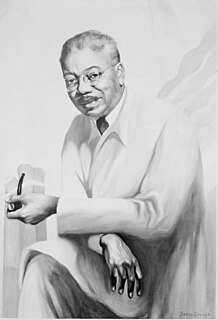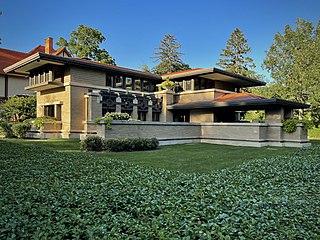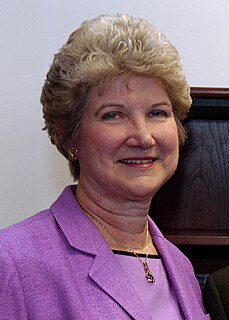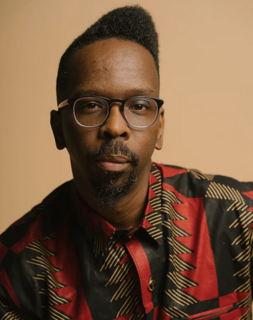Related Research Articles

Charles Henry Alston was an American painter, sculptor, illustrator, muralist and teacher who lived and worked in the New York City neighborhood of Harlem. Alston was active in the Harlem Renaissance; Alston was the first African-American supervisor for the Works Progress Administration's Federal Art Project. Alston designed and painted murals at the Harlem Hospital and the Golden State Mutual Life Insurance Building. In 1990, Alston's bust of Martin Luther King Jr. became the first image of an African American displayed at the White House.

Jacob Armstead Lawrence was an American painter known for his portrayal of African-American historical subjects and contemporary life. Lawrence referred to his style as "dynamic cubism", although by his own account the primary influence was not so much French art as the shapes and colors of Harlem. He brought the African-American experience to life using blacks and browns juxtaposed with vivid colors. He also taught and spent 16 years as a professor at the University of Washington.

The Detroit Institute of Arts (DIA), located in Midtown Detroit, Michigan, has one of the largest and most significant art collections in the United States. With over 100 galleries, it covers 658,000 square feet (61,100 m2) with a major renovation and expansion project completed in 2007 that added 58,000 square feet (5,400 m2). The DIA collection is regarded as among the top six museums in the United States with an encyclopedic collection which spans the globe from ancient Egyptian and European works to contemporary art. Its art collection is valued in billions of dollars, up to $8.1 billion USD according to a 2014 appraisal. The DIA campus is located in Detroit's Cultural Center Historic District, about 2 miles (3.2 km) north of the downtown area, across from the Detroit Public Library near Wayne State University.

Aaron Douglas was an American painter, illustrator and visual arts educator. He was a major figure in the Harlem Renaissance. He developed his art career painting murals and creating illustrations that addressed social issues around race and segregation in the United States by utilizing African-centric imagery. Douglas set the stage for young, African-American artists to enter the public-arts realm through his involvement with the Harlem Artists Guild. In 1944, he concluded his art career by founding the Art Department at Fisk University in Nashville, Tennessee. He taught visual art classes at Fisk until his retirement in 1966. Douglas is known as a prominent leader in modern African-American art whose work influenced artists for years to come.

John Thomas Biggers was an African-American muralist who came to prominence after the Harlem Renaissance and toward the end of World War II. Biggers created works critical of racial and economic injustice. He also served as the founding chairman of the art department at Houston's Texas State University for Negroes, a historically black college.

Gerald Rudolph Ford Jr. was an American politician who served as the 38th president of the United States from 1974 to 1977. He was the only president never to have been elected to the office of president or vice president. He previously served as the leader of the Republican Party in the House of Representatives, and was appointed to be the 40th vice president in 1973. When President Richard Nixon resigned in 1974, Ford succeeded to the presidency, but was defeated for election to a full term in 1976.

Hale Aspacio Woodruff was an American artist known for his murals, paintings, and prints.

Robert Seldon Duncanson was a 19th-century American landscapist of European and African ancestry. Inspired by famous American landscape artists like Thomas Cole, Duncanson created renowned landscape paintings and is considered a second generation Hudson River School artist. Duncanson spent the majority of his career in Cincinnati, Ohio and helped develop the Ohio River Valley landscape tradition. As a free black man in antebellum America, Duncanson engaged the abolitionist community in America and England to support and promote his work. Duncanson is considered the first African-American artist to be internationally known. He operated in the cultural circles of Cincinnati, Detroit, Montreal, and London. The primary art historical debate centered on Duncanson concerns the role that contemporary racial issues played in his work. Some art historians, like Joseph D. Ketner, believe that Duncanson used racial metaphors in his artwork, while others, like Margaret Rose Vendryes, discourage viewers from approaching his art with a racialized perspective.

Charles Robert Knight was an American wildlife and paleoartist best known for his detailed paintings of dinosaurs and other prehistoric animals. His works have been reproduced in many books and are currently on display at several major museums in the United States. One of his most famous works is a mural of Tyrannosaurus and Triceratops, which helped establish the two dinosaurs as "mortal enemies" in popular culture. Working at a time when many fossil discoveries were fragmentary and dinosaur anatomy was not well understood, many of his illustrations have later been shown to be incorrect representations. Nevertheless, he has been hailed as "one of the great popularizers of the prehistoric past".

Vincent van Gogh made many copies of other people's work between 1887 and early 1890, which can be considered appropriation art. While at Saint-Paul asylum in Saint-Rémy-de-Provence, France, where Van Gogh admitted himself, he strived to have subjects during the cold winter months. Seeking to be reinvigorated artistically, Van Gogh did more than 30 copies of works by some of his favorite artists. About twenty-one of the works were copies after, or inspired by, Jean-François Millet. Rather than replicate, Van Gogh sought to translate the subjects and composition through his perspective, color, and technique. Spiritual meaning and emotional comfort were expressed through symbolism and color. His brother Theo van Gogh would call the pieces in the series some of his best work.
David Robert Mullen is an American artist and photographer. His art spans a wide range of styles from realist, to abstraction, to surrealist. David Mullen has practiced fine art photography for over 35 years. He views photography as a great printmaking art and has worked in black and white processes such as Van Dyke brown, platinum, silver gelatin and digital formats. For the last seventeen years, Mullen has dedicated his time to black and white and color photography as well as painting in water media such as watercolor, gouache, and acrylics. Mullen has won numerous awards for his work.

Thelma Beatrice Johnson Streat (1912–1959) was an African-American artist, dancer, and educator. She gained prominence in the 1940s for her art, performance and work to foster intercultural understanding and appreciation.

Albert Henry Krehbiel, was the most decorated American painter ever at the French Academy, winning the Prix De Rome, four gold medals and five cash prizes. He was born in Denmark, Iowa and taught, lived and worked for many years in Chicago. His masterpiece is the programme of eleven decorative wall and two ceiling paintings / murals for the Supreme and Appellate Court Rooms in Springfield, Illinois (1907–1911). Although educated as a realist in Paris, which is reflected in his neoclassical mural works, he is most famously known as an American Impressionist. Later in his career, Krehbiel experimented in a more modernist manner.

Grand Rapids is a city and county seat of Kent County in the U.S. state of Michigan. At the 2020 census, the city had a population of 198,917 which ranks it as the second most-populated city in the state after Detroit. Grand Rapids is the central city of the Grand Rapids metropolitan area, which has a population of 1,087,592 and a combined statistical area population of 1,383,918.

The Gerald R. Ford Presidential Museum is the presidential museum and burial place of Gerald Ford, the 38th president of the United States (1974–1977), and his wife Betty Ford. It is located near the Pew Campus of Grand Valley State University in Grand Rapids, Michigan. Ford's presidential museum is the only such facility under the auspices of the National Archives and Records Administration to be separate from the presidential library, which is located approximately 130 miles (210 km) to the east in Ann Arbor. Despite the separation, the library and museum are a single institution with one director.

Elaine Didier is the director of the Gerald R. Ford Presidential Library and Museum in Michigan, United States. Didier worked at the University of Michigan from 1977 to 1999, where she earned her Doctorate (PhD) in 1982. She was appointed as a board member in October 1997 at Compuware, a Detroit, Michigan based software company with products aimed at the information technology departments of large businesses. In July 1999, Didier left the University of Michigan to become dean of Kresge Library at Oakland University. Didier became director of the Ford Presidential Library and Museum in January 2005. Didier led efforts to increase attendance to the museum. For her accomplishments, she received the University of Michigan Distinguished Alumni Award and the Rotary Club Distinguished Service Award.
Reynold Henry Weidenaar (1915-1985) was an artist from Grand Rapids, Michigan, recognized nationally as well as locally for his technical virtuosity as a draftsman and printmaker. He embraced the subject matter and realism of American Regionalist art, though his depictions of the American Scene reflect a uniquely personal, often satirical perspective. Weidenaar is especially known for his mezzotint prints, particularly those of architectural subjects, such as the construction of the Mackinac Bridge.

Fahamu Pecou is an American painter and scholar. He is known for producing works that combine aspects of Fine art and Hip-hop. Most of his works engage representations of black masculinity and identity.
Joseph Antenucci Becherer is an American curator, professor, writer, and arts administrator. He is a scholar of modern and contemporary sculpture, organizing major exhibitions and installations from Auguste Rodin to Jonathan Borofsky, Henry Moore to Magdalena Abakanowicz, Jenny Holzer to Ai Weiwei.

Mavis Iona Pusey was a Jamaican-born American abstract artist. She was a printmaker and painter who was well known for her hard-edge, nonrepresentational images. Pusey drew inspirations from urban construction. She was a leading abstractionist and made works inspired by the constantly changing landscape.
References
- ↑ Black, Bob (1978-09-21). "Exhibit salutes black women". Chicago Sun Times.
- ↑ "Paul Collins: Grand Rapids Artist Appointed to National Board". The Organizer. June 1981.
- ↑ Who's who in American art, 1995-96 (21st ed.). New York: R.R. Bowker. 1995. pp. 237. ISBN 0835235718.
- "Grand Rapids History & Special Collections" (PDF). GRAND RAPIDS PUBLIC LIBRARY. Archived from the original (PDF) on 13 June 2010. Retrieved 3 April 2010.
- A Time to Heal, Gerald R. Ford, Harper & Row, ISBN 978-0060112974, p432
- Artists of Grand Rapids 1840–1980 - J. Gray Sweeney, Grand Rapids Art Museum
- Artists in Michigan – 1900–1976, Wayne State University Press
- Black Portrait of an African Journey – Eerdmans Publishing
- Charles H. Wright Museum of African American History
- Crisis Magazine, July/August, 1999
- American Artist magazine
- Ebony Magazine, October 1971, June 1973, February 1994, April 2006
- Executive Japan, June 1994
- Janet L. Martineau – Times news service
- Jet magazine
- Insight magazine, May 1, 1989
- Michigan History , Oct. 2004
- Newsweek magazine, Oct. 11, 1976
- Palette Talk # 47
- Profiles of Key West, Alma Bond, Poho Press
- 20 Figure Painters and How They Work – Susan Meyers, Watson Guptill publications
- Key West Museum of Art & History